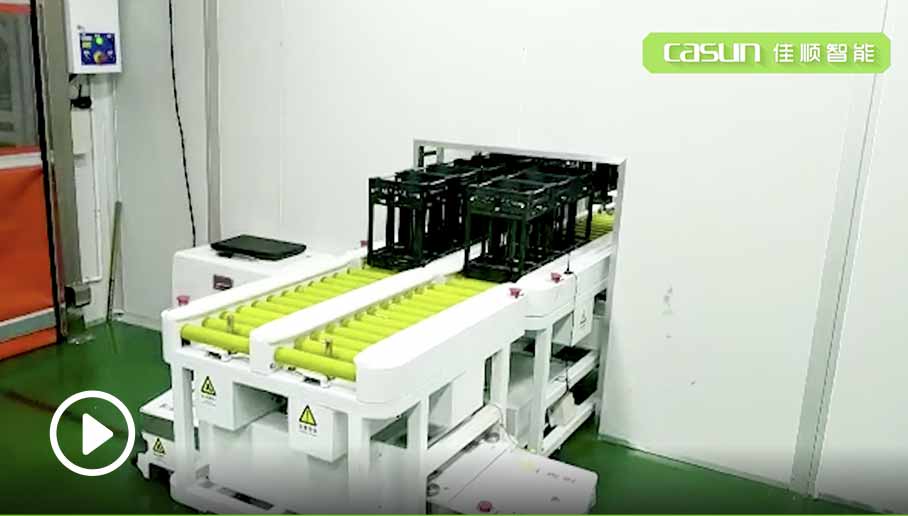 Focus on AGV industry for 18 years
Focus on AGV industry for 18 years
 Focus on AGV industry for 18 years
Focus on AGV industry for 18 years
As the core of the electric vehicle industry chain, the power battery factory faces highly complex production processes such as assembly, testing, and packaging for its cell and PACK scenarios. The variety of material products is extensive, and vehicle switching occurs frequently. Traditional production models are plagued by issues such as lagging material information status, low efficiency of manual handling, high difficulty, frequent errors, and high costs. This super factory requires a comprehensive smart logistics solution to adapt to and improve production processes, enhance the flexibility, coordination, and efficiency of logistics workflows, and leverage big data analysis to better understand material status and production efficiency. This will enable timely optimization decisions, improve manufacturing effectiveness, and facilitate the rapid rollout of products.

The project is large in scale, involving a significant amount of production equipment, materials, and human resources. The introduction of AGVs must adapt to the complex layout of the factory and the large-scale material transport needs. Both the construction and production timelines are compressed to the shortest possible duration, requiring AGV application projects to complete planning, design, deployment, and debugging within a limited timeframe to ensure production starts on time.
AGVs need to operate with precision within ±5mm in complex factory environments to ensure smooth material transport and efficient operation of production lines. They must interface with multiple client systems and address compatibility issues between different systems to ensure accurate data transmission and real-time synchronization.
The AGV system must cover all aspects and scenarios within the factory, including material transport, production line connectivity, and warehouse management. In complex production lines, over 100 mobile robots need to work in coordination, maintaining an efficient production pace to meet real-time production demands and maximize manufacturing efficiency.

This project primarily employs latent traction mobile robots and load and transfering mobile robots, participating in key stages of the production process, including battery cells and PACK assembly.
The load-carrying roller-type mobile robots transport and unload battery cells and fixed-box materials by interfacing with the conveyor lines. The latent traction mobile robots tow tooling carts to form a flexible production line, sequentially passing through various assembly and inspection stations to complete PACK production. The AGVs use side-charging stations to recharge during the assembly process, ensuring uninterrupted 24-hour continuous production operations.


AGVs operate autonomously without requiring drivers. They feature self-diagnostic capabilities, making maintenance convenient in case of malfunctions. The AGV system enables intelligent scheduling, avoiding collisions among multiple vehicles during operations, and reducing personnel management costs.

AGVs enhance product quality and accuracy while minimizing material damage during transportation, thus improving the overall handling process.

AGVs serve as flexible work platforms, meeting evolving process requirements and driving technological upgrades.
